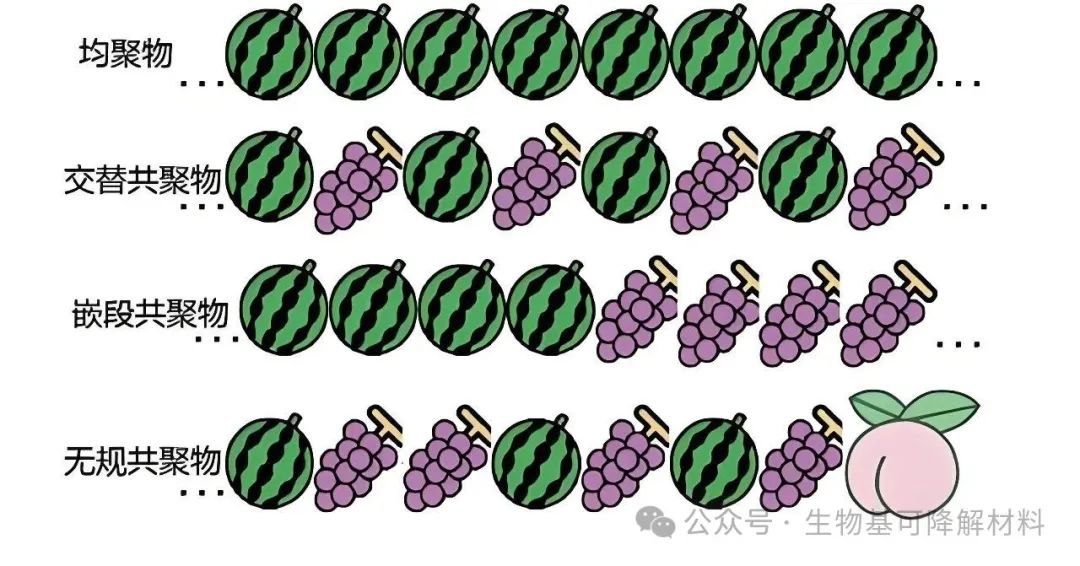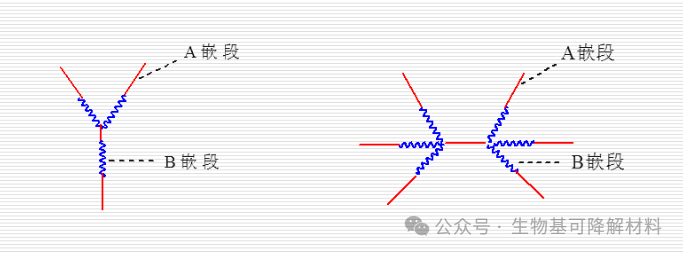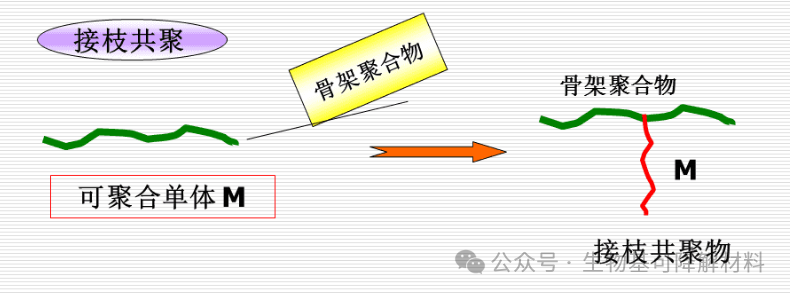Did You Know? These Are the Common Methods of Copolymer Modification for Polymer Materials
In the field of polymer material modification, in addition to physical blending, copolymerization modification is also an important means to enhance material performance, and it is widely used in the field of bio-based degradable materials. Compared to physical blending, which mixes different materials through physical interactions, copolymerization modification uses chemical methods to "connect" two or more monomers into a molecular chain, altering material properties at the molecular structure level. This approach addresses the deficiencies of single polymers, such as the brittleness of polylactic acid (PLA) and the insufficient heat resistance of polycaprolactone (PCL).
According to the connection methods of monomers and the characteristics of the reactions, copolymer modification can mainly be divided into three common types: random copolymerization, block copolymerization, and graft copolymerization. The following provides a detailed introduction to these three methods.

Random Copolymerization: Random Arrangement of Monomers
Random copolymerization refers to the process where two or more monomers are randomly connected along the molecular chain during polymerization, without a fixed arrangement order. For example, when lactic acid monomers and glycolic acid monomers undergo random copolymerization, the resulting polylactic-co-glycolic acid copolymer (PLGA) is a typical random copolymer.
Advantages:
The material properties can be flexibly adjusted by changing the ratio of different monomers, allowing for continuous adjustment of the copolymer's melting point, glass transition temperature, etc. For example, increasing the proportion of glycolic acid will accelerate the degradation rate of PLGA.
The synthesis process is relatively simple and can be achieved using conventional polymerization equipment (such as a reactor) in most cases, making it suitable for industrial production.
The defects of a single polymer can be improved. For example, after randomly copolymerizing polylactic acid (PLA) with a small amount of caprolactone monomer, the brittleness can be reduced and the flexibility enhanced.
Shortcomings:
The compatibility requirement of monomers is high; if the reactivity difference between two monomers is large, uneven polymerization easily occurs, affecting performance stability.
Excessive introduction of a second monomer may compromise the original advantages of the material. For example, copolymerizing PLA with too many flexible monomers may reduce the material's strength and heat resistance.
Sensitive to reaction conditions (such as temperature and catalyst), precise control is required to ensure copolymerization uniformity.
Block copolymer: monomers "arranged in segments"
Block copolymerization refers to the process where two or more monomers each form relatively long "segments," which are then connected to form a single polymer chain, much like "chains of different materials linked end to end." For example, polylactic acid (PLA) and polyethylene glycol (PEG) can be block copolymerized to form PLA-PEG-PLA triblock copolymers, which retain the rigidity of PLA while introducing the hydrophilicity of PEG.

Advantages:
It can combine the advantages of different monomers to achieve a performance of "1+1>2". For example, by block copolymerizing bio-based polyester with polyether, it is possible to obtain both excellent mechanical properties and flexibility.
The molecular structure has strong controllability, and the material properties (such as degradation rate and hydrophilicity/hydrophobicity) can be precisely designed by adjusting the length and proportion of each block.
Good compatibility; the block structure can reduce phase separation between different components, making it more stable than simple blending.
Insufficient:
The synthesis process is complex, requiring stepwise polymerization or the use of special initiators, resulting in higher production costs.
High requirements for equipment and technology, especially the preparation of long-chain block copolymers is difficult, making industrial production highly challenging.
The thermal stability of some block copolymers is relatively poor, and chain scission may occur during high-temperature processing.
Graft Copolymerization: Targeted Modification of Monomers with "Side Chains Attached to the Main Chain"
Graft copolymerization refers to the process where a monomer is "grafted" onto the main chain of a polymer to form side chains, similar to "branches growing from a trunk."

Advantages:
Highly targeted, capable of “precisely repairing” defects in the main-chain materials. For example, grafting flexible side chains onto the brittle PLA main chain specifically improves its impact resistance.
It can retain the basic properties of the main chain and adjust specific functions (such as hydrophilicity and compatibility) solely through the side chains.
Wide applicability: whether natural polymers (starch, cellulose) or synthetic bio-based materials, performance can be optimized through graft modification.
The shortage:
The distribution of branches is difficult to be completely uniform, which may lead to fluctuations in material performance.
The grafting rate is difficult to control: if it is too high, the main chain structure may be damaged, while if it is too low, the modification effect will not be significant.
Side homopolymerization reactions are likely to occur during the process, so an efficient catalyst is required to suppress the formation of by-products.
Copolymers provide a precise solution for optimizing the performance of polymer materials through molecular-level design: random copolymers flexibly adjust basic properties and are suitable for balancing the comprehensive characteristics of materials; block copolymers excel at integrating the advantages of different monomers and are suitable for preparing high-performance composite functional materials; graft copolymers specifically address particular defects, making them especially suitable for the modification and upgrading of natural polymers.
In practical applications, the selection of a copolymerization method should be based on material requirements, production conditions, and cost considerations.
【Copyright and Disclaimer】The above information is collected and organized by PlastMatch. The copyright belongs to the original author. This article is reprinted for the purpose of providing more information, and it does not imply that PlastMatch endorses the views expressed in the article or guarantees its accuracy. If there are any errors in the source attribution or if your legitimate rights have been infringed, please contact us, and we will promptly correct or remove the content. If other media, websites, or individuals use the aforementioned content, they must clearly indicate the original source and origin of the work and assume legal responsibility on their own.
Most Popular
-

List Released! Mexico Announces 50% Tariff On 1,371 China Product Categories
-

Nissan Cuts Production of New Leaf EV in Half Due to Battery Shortage
-

New Breakthrough in Domestic Adiponitrile! Observing the Rise of China's Nylon Industry Chain from Tianchen Qixiang's Production
-

Dow, Wanhua, Huntsman Intensively Raise Prices! Who Controls the Global MDI Prices?
-

Mexico officially imposes tariffs on 1,400 chinese products, with rates up to 50%






